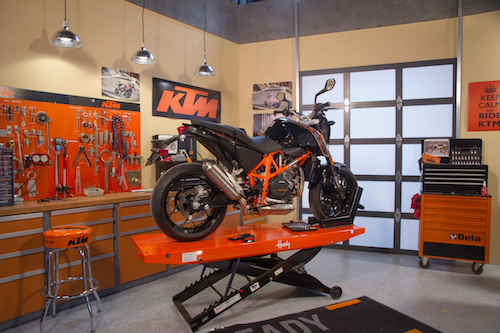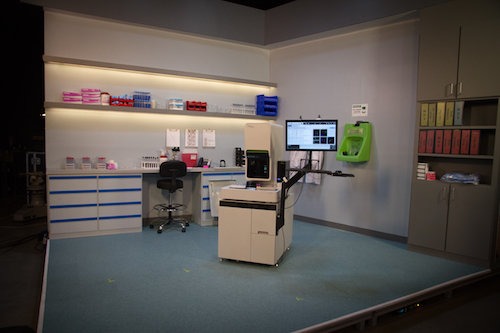A short three months after its $65 million acquisition of the Vuforia augmented reality platform, PTC is showing just how crucial that technology is to its future vision for reinventing itself as a core Internet of Things (IoT) platform provider.
While the Vuforia technology lies at the heart of some pretty compelling consumer product marketing initiatives and some cool kid's toys from LEGO, PTC believes there’s a more promising enterprise value proposition, including leveraging augmented reality (AR) capabilities as a way to experience IoT products and platforms on a totally different level. Using an augmented reality platform to overlay digital data — everything from real-time temperature readings coming off a sensored product to key design data stored in a PLM platform like Windchill — companies can elevate interaction with a product, providing service operators with detailed instructions or facilitating design reviews for engineers.
 KTM sees huge potential in augmented reality as a way to help address service challenges. Image Courtesy of PTC
KTM sees huge potential in augmented reality as a way to help address service challenges. Image Courtesy of PTC“The digital/physical worlds are converging with products existing in both at the same time, comprising both hardware and software, part on-premise in the field with customers and part digital up in the cloud,” said CEO Jim Heppelmann, at last week's ThingEvent held in Boston. He sketched out a new corporate positioning to “take a fresh look at things,” with a significant emphasis on augmented reality. “PTC has invested more than $700 million to transform its portfolio with new technology for connectivity and cloud-based capabilities.”
Heppelmann and the PTC crew outlined a range of enterprise use cases, including validating products against the original design, facilitating more efficient and insightful design reviews, and as a means for better product training. However, service was the main event as PTC and a handful of early AR customers talked about how AR is “the killer capability” that will transform service operations.
For example, KTM, a maker of high-end motorcycles, described an iPad service dashboard, built with ThingWorx and Vuforia, that lets field technicians perform faster diagnostics and deliver a more consistent level of service. By overlaying the 3D CAD geometry on the physical bike, technicians can see exactly how to how to remove a panel and check a particular connection, streamlining the procedure. Similarly, Sysmex America, a maker medical instruments, plans to marry IoT and AR capabilities to make its field staff more efficient and to help customers perform more self-service operations and improve medical equipment uptime.
 Sysmex is exploring the use of the Vuforia augmented reality platform to provide step-by-step instructions to help customers get instruments back up and running quickly. Image Courtesy of PTC
Sysmex is exploring the use of the Vuforia augmented reality platform to provide step-by-step instructions to help customers get instruments back up and running quickly. Image Courtesy of PTCBeyond showcasing real-world customer examples, PTC unveiled a number of enhancements designed to shore up Vuforia’s enterprise game, including adding support for Windows 10 devices like Microsoft’s Surface Pro 4 and Surface Book, as well a new VuMark, which officials dubbed a next-generation bar code. Like a QR code, the VuMark designates an AR experience to a particular product or thing, encoding data like URLs or product serial numbers. The difference is VuMark allows for greater design freedom, allowing engineers and designers of the AR experience to incorporate a custom look and feel.
PTC also previewed several critical ThingWorx announcements it plans to detail this summer at its upcoming ThingWorx conference. As part of an expanded strategy it’s calling ThingX, PTC plans to release ThingBrowser, a universal browser for recognizing and interacting with smart, connected products in lieu of disparate apps; ThingBuilder, a drag and drop environment for building IoT experiences that integrate data from PLM and SLM; and ThingServer, akin to a Web Server, but specifically for managing and serving up all relevant data specific to a particular “thing.”
Watch these videos to hear PTC customers discuss their current and future plans for IoT and AR for service and other functions.
About the Author
Follow Robotics 24/7 on Linkedin
Article topics
Email Sign Up
















